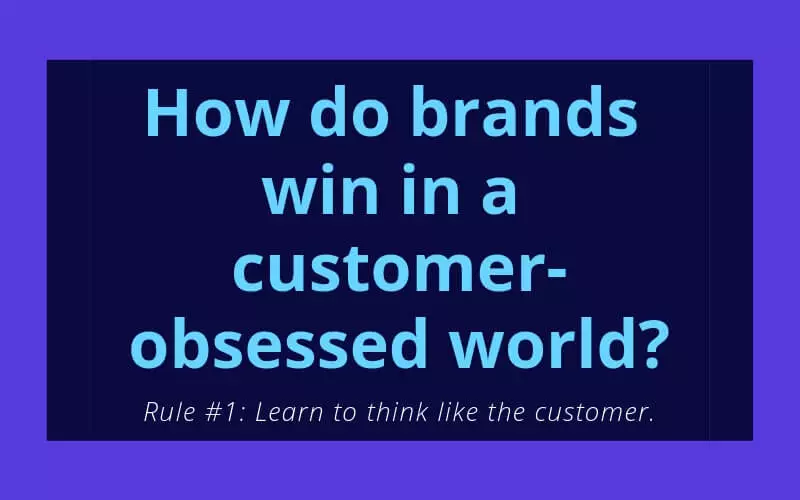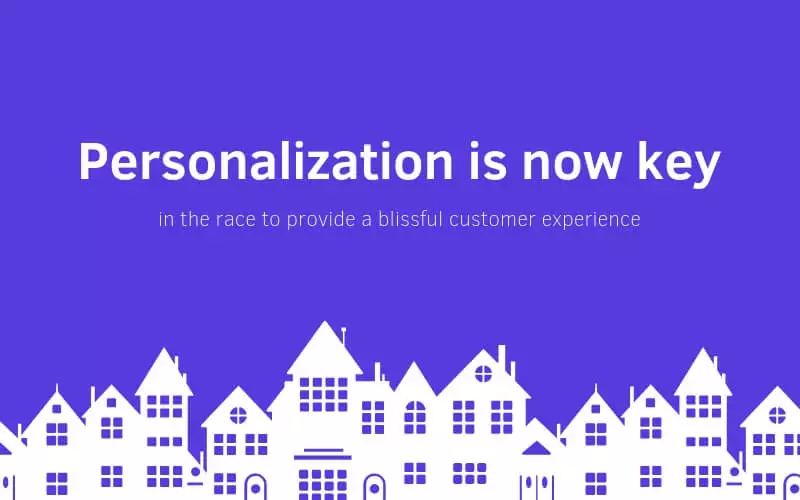How easy is it to poach a somewhat satisfied customer?
Easier than you think. Research shows out of every 100 customers who churn, 75 say they had been “satisfied or completely satisfied.”
In the digital age, it’s no longer enough to foster satisfaction. Experience disconnect costs you more than loyalty. The hint of friction along a path to purchase could turn your customer into a “serial switcher.”
According to the NewVoiceMedia’s 2018 “Serial Switchers” report, “Brands are failing to create the positive, emotional experiences that drive customer loyalty.”
In a customer-obsessed era, visualizing and enhancing a customer’s user journey has become high-priority.
Here’s what you need to know about customer experience vs. user journey and how to drive customers on the path to purchase.
Understanding why your customers will pay
Here’s what your customers do want: an end-to-end frictionless and personal experience. Your customers crave convenience and emotional connection.
Dive deeper: Here’s how to save a path to purchase from cart abandonment.
What’s more, they want to buy from a brand that earns their trust — and empathizes with their pain points. Clients will pay for a relevant product or service boasting an easy-to-navigate user experience.
Today, 89% of companies believe competition will center on the basis of customer experience, according to Gartner. For brands to win on the customer-obsessed frontlines, enterprises have to learn to think like the customer.
What is the customer experience?
The customer experience is how a customer perceives his or her interactions with your company.
When interactions are positive, a consumer will also feel enthusiastic about your brand.
That said, you may offer a state-of-the-art product — but this won’t erase bad customer perception. If a customer has a negative service interaction, or if you ship a faulty product, this will dent customer perception.
Your business is dependent on good customer interactions. This is how “favorite brands” win loyalty and capture consumer dollars.
Customers’ perception is formed by the experience they have while on the path to purchase.
The Serial Switchers report breaks down this experience into three parts:
- Whether the customer achieved his or her goal.
- The level of ease in reaching this goal.
- How the experience made the customer feel.
How you make your customers feel is essential to crafting brand perception.
In fact, 63% of respondents said that a positive emotional connection with a customer service agent would make them more likely to do business with that company again.
When asked what constitutes feeling emotionally connected, respondents listed the following as top factors:
- Being able to contact the company through any channel.
- Access to a highly knowledgeable customer service agent.
- Receiving a personalized experience.
According to the Forbes Tech Council, as technology has progressed, this has pushed companies to take a more focused approach — a targeted, deep dive into the customer experience.
Customers want relevance — and brands are listening. Personalization has become central in the race to provide a blissful customer experience.
Businesses today must meet the needs of digital customers — consumers who expect results instantaneously, at their fingertips. The optimal path to purchase provides speed, consistency, convenience, and friendliness.
But a strong path to purchase is built on smooth customer interactions — and accordingly, a captivating customer experience.
What is the user journey?
The user journey — or user experience (UX) — pieces together the bigger picture: an end-user’s moments of contact with a company’s product or service.
If something impacts a customers’ product experience, this will color their overall UX. Listing hi-tech product features isn’t enough to snap up a digital customers’ loyalty.
Exceptional user experience happens when your products and/or services not only meet, but even anticipate — what your customers need.
For a company to achieve this, it must operate seamlessly internally. Each department must work together to accomplish a higher purpose.
However, UX is not the same as UI (user interface).
For example, consider entertainment on demand. Let’s say this user is searching to watch a foreign film. Even if the UI for finding and watching a TV show or movie is intuitive, the UX will be poor if the database only contains Hollywood content.
Customer experience vs. user journey — how to enhance the path to purchase
When it comes to the customer experience vs. user journey, both CX and UX demand attention from COOs. To attract brand-loving customers, you must first understand the role CX and UX play along a consumers’ path to purchase.
Customer experience vs. user journey — connecting the dots
Both CX and UX are built through interactions with your brand.
However, whereas the user journey stands for the whole picture, customer experience speaks to perception.
A brand has the capacity to improve both CX as well as UX. Incremental changes to various functions can improve customer experience.
But only when your business acts holistically can your brand execute true user experience. This means catering for every possible scenario between a user and a given product/service.
Looking at customer experience vs. user journey through a digital lens means understanding the “online factor.” Because of the proliferation of e-commerce, brands end up creating CX online — and today’s path to purchase tends to exist online.
The difference: a customers’ user journey will only be online if the product or service itself is online.
In the digital world, the lines blur between customer experience vs. user journey. Both intersect with and impact your target consumers’ path to purchase.
But in the business of attracting (and retaining) satisfied customers, the equation is clear. Memorable customer experience + an effortless user journey will pave a competitive path to purchase.
When competing in a customer-obsessed era, your goal is not to sell products or services. It’s to offer the kind of empathy and user satisfaction along the way that makes your brand irresistible.
_________
WalkMe’s Digital Adoption Platform (DAP) transforms the user experience in today’s overwhelming digital world. Using artificial intelligence, engagement, guidance, and automation, WalkMe’s transparent overlay assists users to complete tasks easily within any enterprise software, mobile application or website. Discover how a DAP can revolutionize your business — request a demo today.



